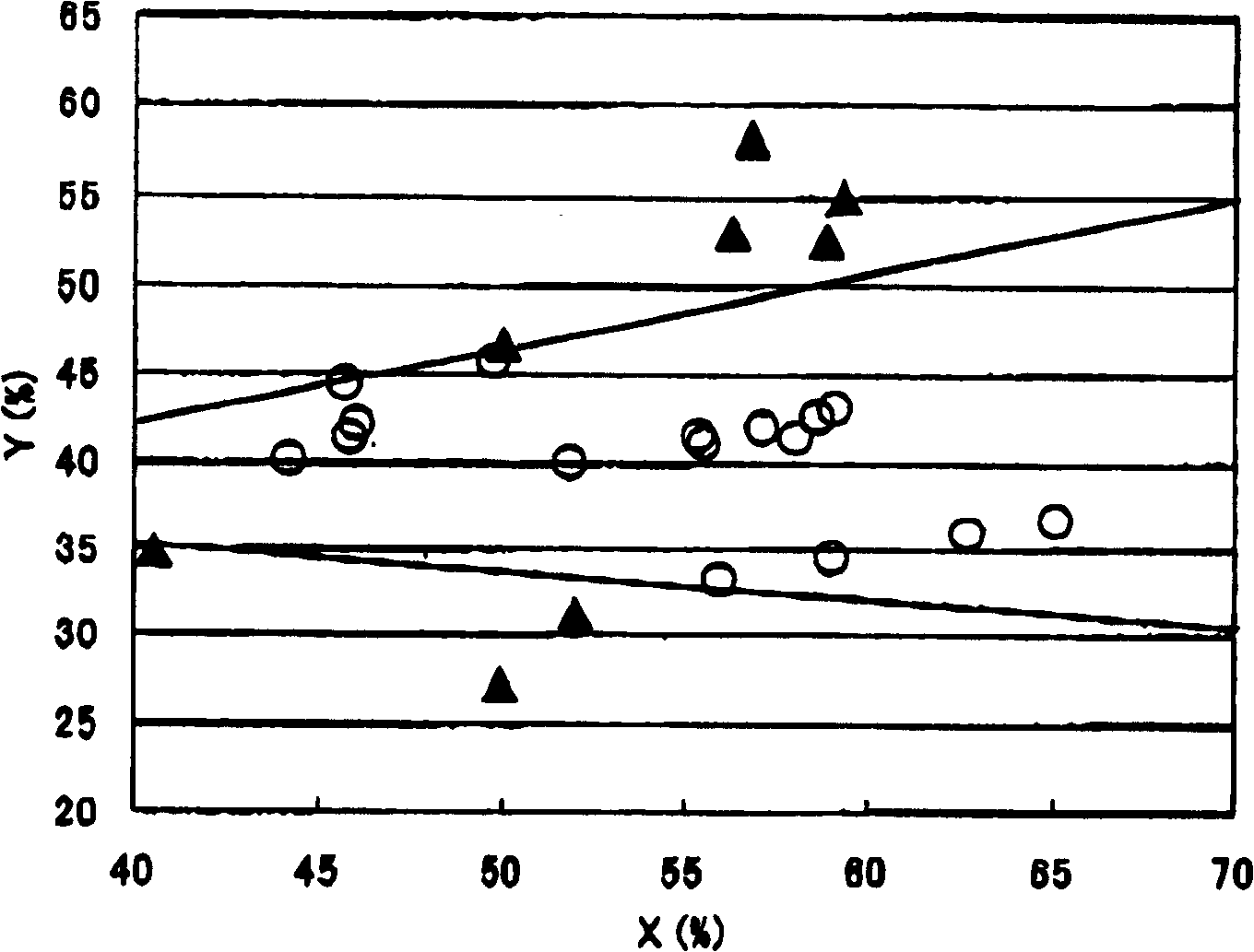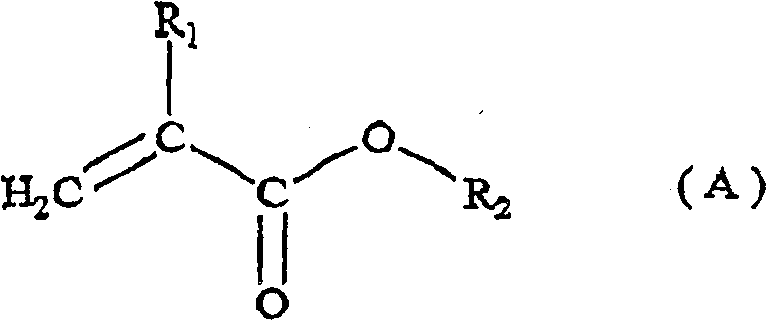Adhesive
An adhesive and adhesive layer technology, applied in the direction of adhesives, film/sheet adhesives, non-polymer adhesive additives, etc., can solve the problems of uneven distribution of residual stress, easy curling and peeling, etc. Residues and cloudiness of adhesive, excellent reworkability, and effect of reducing stress concentration
- Summary
- Abstract
- Description
- Claims
- Application Information
AI Technical Summary
Problems solved by technology
Method used
Image
Examples
Embodiment
[0107] Hereinafter, the present invention will be described more specifically with reference to examples. In addition, "part" and "%" in an Example mean a basis of weight unless otherwise specified. In addition, the non-volatile matter is measured by the measuring method based on JISK-5407. Specifically, an arbitrary weight of the adhesive solution was taken in a dish, and the ratio of the weight of the remaining non-volatile components after drying in an explosion-proof oven at 115° C. for 2 hours to the weight of the initially measured solution was expressed. The weight-average molecular weight is measured by using a device converted to standard polystyrene. When the sample concentration is 5 mg / ml and the sample introduction volume is 100 μml, Tosoh Co., Ltd.: TSKgel G6000H is used. XL 2 sticks, TSKgelG5000H XL Two columns connected in series are used as a chromatographic column, under the conditions of a temperature of 40°C and a flow rate of 1ml / min, using tetrahydrofur...
manufacture example
[0109] (polymerization example 1)
[0110] Add 222 parts of ethyl acetate to the reactor with cooling pipe, nitrogen inlet pipe, thermometer and stirrer, replace the air in the device with nitrogen, and raise the inner temperature to 75°C after oxygen is freed. After adding the whole amount of a solution obtained by dissolving 0.5 part of azobisisobutyronitrile (hereinafter referred to as AIBN) in 12.5 parts of ethyl acetate, the internal temperature was maintained at 74°C to 76°C, and within 3 hours, the single A mixed solution of 36 parts of butyl acrylate, 44 parts of butyl methacrylate and 20 parts of methyl acrylate of body (a) was dropped in the reaction system. Then, the inner temperature was kept at 74° C. to 76° C. for 5 hours to complete the reaction. The polystyrene-equivalent weight average molecular weight of GPC was 100,000.
[0111] (polymerization examples 2 to 5)
[0112] With the monomer composition shown in Table 1, the reaction was basically carried out ...
Embodiment 1
[0125]
[0126] The acrylic resins (1) and (2) were mixed in the weight ratio shown in Table 3 to obtain an ethyl acetate solution of the acrylic resin composition. In 100 parts of non-volatile components of the obtained solution, 2 parts (non-volatile components) of an adduct of toluene diisocyanate (trade name: Coronet L, manufactured by Nippon Polyurethane Industry Co., Ltd.) as a crosslinking agent, a silane compound ( Trade name: Y11597, manufactured by Dow Corning Toray) 0.1 part to obtain the adhesive of the present invention.
[0127]
[0128] The thus-obtained adhesive was coated on a mold-releasing polyethylene terephthalate film (manufactured by Lintec Co., Ltd., trade name: PET3811) using a coater so that the thickness after drying was 25 μm. The treated surface was dried at 90° C. for 1 minute to obtain a sheet-like adhesive. Then, a polarizing film (a film having a three-layer structure on both sides of a film obtained by absorbing iodine to polyvinyl alcoho...
PUM
 Login to View More
Login to View More Abstract
Description
Claims
Application Information
 Login to View More
Login to View More - R&D
- Intellectual Property
- Life Sciences
- Materials
- Tech Scout
- Unparalleled Data Quality
- Higher Quality Content
- 60% Fewer Hallucinations
Browse by: Latest US Patents, China's latest patents, Technical Efficacy Thesaurus, Application Domain, Technology Topic, Popular Technical Reports.
© 2025 PatSnap. All rights reserved.Legal|Privacy policy|Modern Slavery Act Transparency Statement|Sitemap|About US| Contact US: help@patsnap.com



